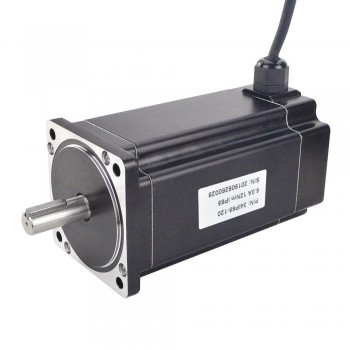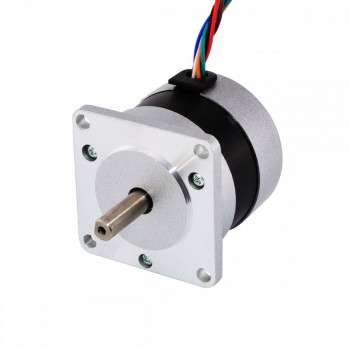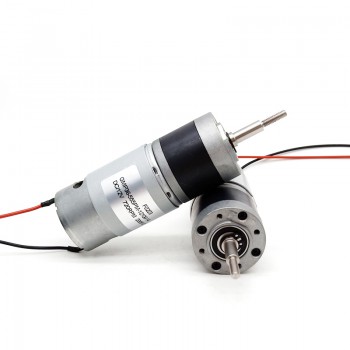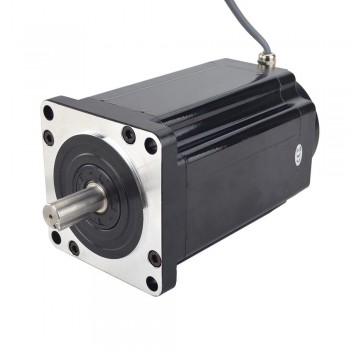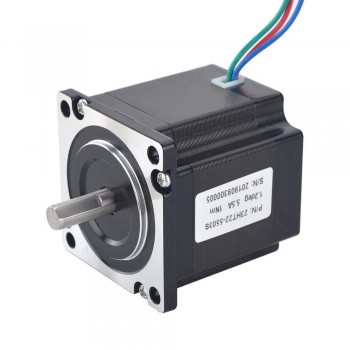1.Definition
The waterproof stepper motor is an electric device with waterproof function, suitable for various scenarios that require waterproof protection. It has the advantages of high reliability, wide adaptability and easy use. This motor can work normally in a specific environment, especially in an underwater environment, such as underwater robots and other applications, where waterproof motors are needed to ensure the normal operation and safety of the equipment.
2.Design principle
The design principle of the waterproof stepper motor focuses on preventing moisture from invading and causing motor short circuit or failure. It adjusts the pressure change caused by temperature by forming a pressure regulating chamber, and adopts materials such as polyethylene insulation and nylon household waterproof electromagnetic wire. The cable connection method is based on cable joint technology. The joint insulation is removed from the scraped paint layer, welded firmly, and the raw rubber is wrapped around the layer to ensure waterproofing. The outer part of the motor is made of anti-corrosion material or anti-corrosion coating. Since the cracks or channels that may exist inside and outside the waterproof motor are blocked by the sealing mechanism, a reliable waterproof effect can be obtained. Even if the motor is watered for a long time, water will not enter the motor and cause a short circuit failure. At the same time, the waterproof stepper motor also has certain explosion-proof performance.
3.Common faults and treatment methods
1.The motor cannot rotate: First, check whether the power supply is working properly, and use a multimeter or voltmeter to measure whether the voltage is stable. If the power supply is normal, the fault may be caused by the driver or the motor itself. At this time, you can try to replace the driver or repair the motor.
2.Unstable rotation or abnormal sound: This may be caused by incorrect configuration or parameter setting of the driver. Check whether the parameters of the driver are correct. If the parameters are correct, it may be that the internal components of the motor are damaged or the magnetic field is unstable. It is necessary to repair or replace the internal components of the motor.
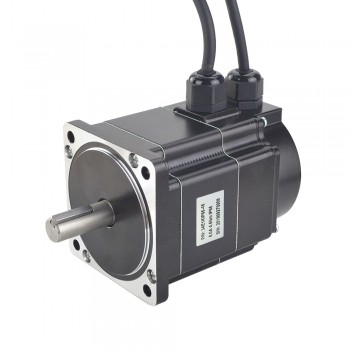
3.Different or inaccurate rotation speed: Incorrect microstep setting may cause this problem. The correct microstep setting can be achieved by adjusting the parameters of the driver. At the same time, check whether the external load is normal, because the external load may affect the rotation speed of the motor.
4.Excessive heat: Excessive heat after long-term operation may be caused by overload or poor internal heat dissipation of the motor. Check whether the load exceeds the rated operating range of the motor, and consider adding a cooling fan or heat sink to improve the heat dissipation effect.
5.Loose core: During operation, if the core is loose, the motor should be stopped and tightened with tools. If the stator core is damaged, it should be replaced in time.
6.Broken winding wire: The broken winding wire may be caused by abnormal vibration during the use of the motor. The damaged winding wire should be replaced in time.
7.Broken and burnt winding joints: This may be caused by the quality of the motor itself or high-load operation. A motor of better quality should be selected and long-term high-load operation should be avoided.
8.Loose brush slip ring: If the brush slip ring is found to be loose, the motor should be stopped and reinforced.
